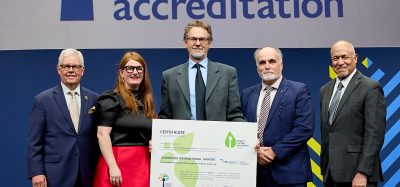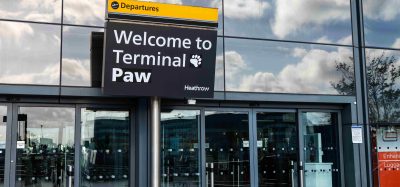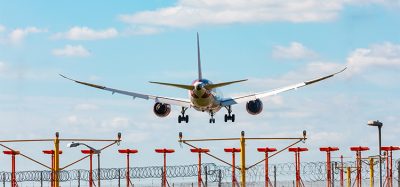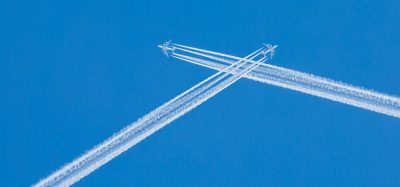Emissions trading and the aviation industry
Posted: 3 April 2007 | Andreas Hardeman, Assistant Director Aviation and Environment, International Air Transport Association (IATA) | No comments yet
Climate change is a serious matter that concerns us all. Rightly there is a public debate about how to limit CO2 or carbon emissions, the main greenhouse gas linked to climate change. As one of the contributors to global CO2 emissions, the air transport industry takes its environmental responsibilities seriously. IATA and its members are committed to finding effective and cost-efficient ways to improve aviation’s environmental performance. This article will look at aviation’s contribution to climate change and explore what governments and the industry can do about it. In particular, it will examine emissions trading, which is one of the tools that can play a role in reducing emissions as long as the scheme is designed in the right way.
Climate change is a serious matter that concerns us all. Rightly there is a public debate about how to limit CO2 or carbon emissions, the main greenhouse gas linked to climate change. As one of the contributors to global CO2 emissions, the air transport industry takes its environmental responsibilities seriously. IATA and its members are committed to finding effective and cost-efficient ways to improve aviation’s environmental performance. This article will look at aviation’s contribution to climate change and explore what governments and the industry can do about it. In particular, it will examine emissions trading, which is one of the tools that can play a role in reducing emissions as long as the scheme is designed in the right way.
Aviation’s contribution to climate change
Lets start by looking at the facts. UN scientists from the IPCC (Intergovernmental Panel on Climate Change) estimate aviation’s contribution to global carbon emissions to be 2%. To put this into perspective, road traffic contributes 18% globally while the fossil fuels used to generate heat and power contribute 35%. The air transport industry is growing at between 5 and 6% per year and the IPCC estimates that this will lead to aviation’s contribution growing to 3% of global CO2 emissions by 2050. Although aviation’s contribution is relatively small, this is still a lot of CO2 and the industry is working hard to limit emissions.
Aviation’s steps to limit emissions
So, what is the industry doing to limit its emissions? Going back to basics is a good place to start. Consume less fuel and you emit less carbon. Aircraft manufacturers play a vital role. Over the last forty years – starting long before Kyoto was signed – fuel efficiency has improved 70%. In the last two years alone, fuel efficiency improved 5%. The industry is projecting at least a further 25% improvement by 2020. The next generation of aircraft will have a fuel efficiency of less than 3 litres per 100 passenger kilometres. That is much better than any hybrid car on the market.
Join us live: Shaping the Next Generation of Hold Baggage and Air Cargo Screening
Join us live for an insightful webinar on 11th December at 14:00 GMT, in collaboration with Smiths Detection, as we explore the strategic balance of operational efficiency, regulatory compliance, and sustainability in high-volume security environments.
This session offers a focused look into future-proofing your security strategy.
Key learning points
- Cost Reduction: Strategies to minimize bag travel time while simultaneously reducing operational costs.
- Regulatory Roadmap: Insights into the next wave of regulatory changes and their impact on future investment decisions.
- Sustainable Systems: Practical approaches to building sustainability into security systems and lowering the total cost of ownership (TCO).
- Scalable Solutions: Real-world examples of scalable systems supporting current airport growth and preparing for tomorrow.
Register now for expert insights, case studies, and actionable strategies on operational efficiency!
In addition, IATA members save CO2 emissions through operational measures. Last year 15 million tonnes of CO2 was saved through a range of operational efficiencies. For instance, shortening 300 routes saved over 5 million tonnes of CO2. This ranges from large savings such as the 30 minutes per flight shaved off each round trip from Europe to China to saving four minutes per flight on the Buenos Aires – Lima route. On average each minute saves 62 litres of fuel and 160 kgs of CO2. Each minute counts and that is why we initiated our “Save One Minute” campaign where we work with air navigation service providers to save one minute per flight through better airspace design, procedures and management. With 30 million flights per year, that is potentially a saving of 4.8 million tonnes of CO2. Last year the campaign saved one million tonnes, which is a good start. Our “Go Teams” helped airlines save another 8 million tonnes of CO2 by identifying fuel saving opportunities.
What governments can do
This is a great result. Airlines are doing their bit but governments also have an important role to play. Lets take air traffic control. The Intergovernmental Panel on Climate Change estimated there is 12% operational inefficiency in air transport. This refers to aircraft spending too much unnecessary time in the air. Too much time flying zigzags due to air traffic control restrictions, too much time circling in holding patterns, too much time being delayed on the ground before take-off. If this inefficiency can be wiped out that’s a massive12% saving in CO2 emissions.
And Governments have the power to sort it out. Just look at Europe. We have 34 air traffic control centres in Europe but only one in the USA for a similar traffic volume and land size. This leads to inefficiencies, delays, and too much time in the air. Governments could save 12 million tonnes of CO2 per year by implementing the Single European Sky. After 20 years of talking, it is time for Europe to make the Single European Sky a reality. And there are other examples of where governments can take concrete actions around the globe.
Some governments are considering the use of emissions trading to limit aviation’s emissions. In principle, we support emissions trading as one of a package of potential measures to reduce CO2 emissions. If properly designed, it can play an important role in tackling aviation’s contribution to global warming along with investment in technology and more efficient infrastructure. But it must be implemented in the right way.
Principles of emission trading
The purpose of emissions’ trading schemes is to reduce emissions in a cost-effective manner. Emissions’ trading is just like other types of trading. But instead of bonds or coffee beans what is traded are rights or ‘‘allowances’’ to emit a certain amount of emissions. Trading within the same sector or industry is called ‘‘closed’’ trading while trading across all sectors is known as ‘‘open’’ trading.
A central authority estimates emissions for a specific period of time and then sets an overall cap below that level. This is the maximum amount of emissions allowed during that period. The cap is then divided into allowances or individual emissions quotas distributed to each trading entity in the scheme. The total number of allowances cannot exceed the cap.
The authority distributes allowances either by auctioning them or by distributing them free of charge. The amount of free allowances is based on past emissions (‘‘grandfathered’’) or on each entity’s emissions’ efficiency against a sector average using a mathematical formula (‘‘benchmarked’’).
Compared to taxes, emissions’ trading is a flexible and cost-effective way of reducing emissions. This is because each entity can choose the least costly option to meet its quota. It can lower its production, improve its energy efficiency, or buy extra allowances from other entities that emit less than their quota. Thus the buyer is paying to emit more, while the seller is paid for having reduced its emissions.
However, flexibility can also mean volatility. Unlike taxation, where the cost can be reasonably estimated in advance, the price of emissions allowances can vary significantly based upon market forces and political influence.
Emissions trading schemes are either mandatory or voluntary. Mandatory schemes can be found in the USA, where emissions trading is used to reduce sulphur dioxide from electric utilities, and in the EU where an emissions trading scheme aims to reduce CO2 emissions. The Chicago Climate Exchange, where companies can trade carbon allowances, is an example of a voluntary scheme.
Emission trading for aviation
Those States that have signed up to the Kyoto Protocol have obligations to reduce their greenhouse gas emissions, including those from domestic aviation. The Kyoto Protocol urges States to address emissions from international aviation through the International Civil Aviation Organisation (ICAO). Both the Protocol and ICAO endorse emissions trading as a mechanism to achieve this. Given the global nature of aviation and climate change, it is essential that emissions trading initiatives respect the global policies and guidance developed by ICAO.
Aviation CO2 emissions result from fuel burn. If airlines were included as trading entities in an emissions trading scheme, they would be given individual quotas for CO2 emissions and their combined amount of CO2 would be capped. To meet emissions targets, operators would need to make some choices: shrink their business, improve fuel efficiency or purchase emissions allowances from others.
Aviation’s projected growth means that emissions will increase and airlines will likely be net buyers of allowances. Cost to airlines would be determined by the price of allowances in the trading market (as a function of demand and supply) and the amount of allowances that have to be purchased. The latter depends on the airline’s total emissions, the level of its emissions quota and the distribution method used (auctioning, grandfathering or benchmarking). The auctioning of allowances could have a very substantial cost impact, as competing airlines will drive up the price. Allowance distribution based on past emissions (grandfathering) would penalise airlines that took early action to modernise their fleets, while a benchmarking approach, if designed properly, would reward more efficient operations.
An ‘‘open’’ trading scheme gives aviation access to a wide market as it allows aviation to buy allowances from other sectors. At the same time aviation is effectively funding emissions reductions in those sectors. A ‘‘closed’’ scheme would allow trading only within the aviation sector and would be expensive with too many airlines chasing too few allowances.
Any emissions trading scheme should avoid competitive distortions. This would occur if, on the same routes, some operators were subject to an emissions quota while others were not. Similarly, air transport would be unfairly penalised if other transport modes were not subject to emissions trading.
Europe’s proposed emissions trading scheme for aviation
The European Union introduced an emissions trading scheme in 2005 for some 12,000 energy-intensive large industrial plants. The scheme covered the power generation, iron and steel, glass, cement, pottery and brick industries accounting for some 40% of the EU’s total CO2 emissions. In its first year of trading there was a surplus of credits as initial allowances were too generous.
In December 2006 the Commission proposed that aviation should be included in the scheme. This will cover emissions from flights within the EU from 2011 and all flights to and from Europe from 2012. Although there were fears that the EU would impose a closed scheme on airlines, they will be allowed to trade emissions allowances with other sectors. Allowances will be distributed to airlines and not countries and the overall cap will be based on average aviation emissions in 2004-2006. 90% of allowances will be free at the start of the scheme.
While IATA supports the concept of emissions trading as one of a number of solutions to limit emissions, we have always advocated a global approach to a global problem for a global industry. As much of international aviation takes place over water this is appropriate and that is why the Kyoto Protocol excluded aviation, deciding instead to ask the intergovernmental UN body, the International Civil Aviation Organisation (ICAO) to develop international solutions to limit aviation emissions. ICAO is due to report back in autumn 2007 with guidelines on emissions trading. The EU has jumped the gun in taking unilateral action to include aviation in its emissions trading scheme. IATA has therefore called on the EU Commission to follow the guidelines that ICAO will produce later this year when designing the details of its scheme. IATA is also concerned about the legal implications of applying the scheme outside Europe from 2012.
Conclusion
In conclusion, the air transport industry in principle supports emissions trading as one of a package of potential measures to reduce CO2 emissions. If properly designed, it can play an important role in tackling aviation’s contribution to global warming along with investment in technology and more efficient infrastructure. But it must be implemented in the right way. In particular, any scheme must follow the guidelines that ICAO will produce later this year. Secondly, governments must take other measures to tackle climate change, including sorting out the inefficiencies in air traffic control.
The International Airport Summit is open for registration!
Date: 19 – 20 November 2025
Location: JW Marriott Hotel Berlin
At our flagship event of the year, we will dive into the future of airport operations, with expert-led sessions on passenger experience, innovative smart technologies, baggage handling, airside operations, data, security, and sustainability.
This is where global airport leaders come together to share insights, challenges, and real-world solutions.
Limited complimentary passes are available for eligible professionals – first come, first served!

















